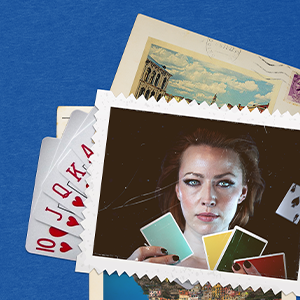Radiant; Through the Boy’s Eyes
By Adam Snow
Photography, to most, is a way to capture and share a single moment in time. Behind each photograph, however, is a story untold. With one click, the camera takes us on a speculative journey through the mind of the photographer. This story is mysterious, powerful, and often unspoken.
Richard Raymond’s “A Million Eyes” aims to tell the story behind the photograph. The main character, Leroy, is a young boy coming of age amidst a turbulent childhood, using a broken camera lens as his escape. Navigating his newfound love for photography and his relationship with his alcoholic single mother, Leroy is a character that many young artists will sympathize with.
“I know there are so many Leroys in our world,” says Raymond. “Kids with a natural interest in the arts but with no support in the community to support them.”
The touching short is the latest from acclaimed director Richard Raymond, previously known for “Desert Dancer” and “Souls of Totality.” It most recently appeared at Raindance Film Festival and has received wins at the Oscar-qualifying HollyShorts Film Festival, as well as a nomination at the Hiroshima International Film Festival.

.Cent Magazine interviewed Raymond to ask him about his inspirations for “A Million Eyes,” the artistic choices made within the short, and his directorial style. Catch the full interview below.
We noticed that there were several frames in the film that were almost framed to look more like photographs. Can you tell us about using this as a device?
Raymond: Yes, that framing device in the film was very intentional. The film is shot in a 5.1 ratio, the same ratio as in stills cameras. Both the cinematographer Jarin Blaschke and myself wanted a sense of precision to the film. Normally films like these are shot kitty and handheld, but I felt this called for a different and more lyrical visual experience. No handheld or steadicam—only still frames or tracking shots. I wanted the film to echo our lead character’s point of view—the unique way he sees the world— hence the many frames within frames that you find within the film. It’s a way to put an intimate focus on our characters and enhance the narrative.
Was the story in any way autobiographic, i.e the idea of using a camera to ‘escape’? If not, where did you find the story and why did it appeal?
Raymond: When I read Curt Zacharias Jr’s fictional script I felt a deep and personal connection to the story of a child discovering their artistic voice—and the importance that mentors play in young people’s lives, especially during the fragility of their artistic journeys. I understand what it was like to have a yearning for creative expression and how that can sometimes be alienating. I think all artists do, and I felt that a story like “A Million Eyes”—the maturation of an artist—had never really been told before. I know there are so many Leroys in our world. Kids with a natural interest in the arts but with no support in the community to support them. “A Million Eyes” shows the significance that arts education can have on kids, especially in underfunded communities, and celebrates the importance of often-overlooked voices. I remember speaking to Joe Morton (who plays Fern) and for him, the film was about hope, growth, mentorship, and the legacy of artists, like Gordon Parks, who paved the way for today’s American artists of color.

The is a moment when the camera pans past a shrine to the father, obviously gone and once in the military. Can you explain why you choose to show this as an image rather than in words the characters may well discuss?

Raymond: I always look for an opportunity to tell a story with an image rather than words. The reveal of the father dying, the symbolism of the 13 folds of the U.S. Flag, I think is very moving… it says everything. “A Million Eyes” in many ways attempts to be subtle and visual with some of the messages, topics, and themes. For instance, the mother’s alcoholism. We wanted to portray a more subtle version of an alcoholic. Not a person who’s a hot mess, falling out of a bar or being violent and dismissive towards their loved ones. But a person we’ve all known at one time or another. A heavy drinker, someone masking the pain, but a functioning person who we care about. Who we root for. Here is a mother who has lost the great love of her life and now she’s raising her son alone in a discarded house which is both decaying and full of painful memories. She’s hurting. There’s nothing to demonize. There’s certainly no judgment from her son, who thinks the world of her and more or less looks after her.
What do you feel you gain from telling stories via images rather than dialogue?
Raymond: Audiences today are super smart—you don’t need to spoon-feed them exposition in order to help them understand your narrative. Film is a visual storytelling medium and it’s always strongest if you can find a way to embrace that. It’s hard work sometimes, but it’s thrilling to convey narrative through images. The opening of my last short film “Souls of Totality” is a good example of this. We start on a CU of a face, another face is revealed and then throughout the whole scene, the camera slowly tracks back to reveal their location, inside an abandoned bus, and then finally the rising sun outside the window. Thematically setting up the whole film.
The character talks in prison about muses. Did you have any? If so who, why, and what?
Raymond: Absolutely. I know I do. But a muse can come in many different forms. That source of inspiration for an artist doesn’t have to be a person or even your intuition. In “A Million Eyes”, Leroy and his mother, they both needed help to move them through their hard times… this help is their muse. Embarrassingly, alcohol took ahold of the mother as her muse—even though her true muse was her son. She was in pain, so drinking allowed her to be transported away from the pain and loss which she was feeling. Leroy’s muse was this spark inside that he was drawn to, but didn’t fully understand. But like alcohol, it was also a way for him to feel transported away from what he was feeling. That’s what the photos on his wall represent. But his desire to use a camera to escape soon turned into the way he was able to be present. This is that moment with his mother at the end. They no longer needed to hide from the pain, but instead needed to be honest about it. That is what art does. It forces honesty… because it only truly works when it is honest.
Lastly, you are up for awards. How much does that matter or not matter, and why?
Raymond: After having many years in the past when I struggled to make my next film, you learn that the real reward is the doing of it. Nothing else matters. That first day on set, when the actors, the crew, everyone is there is creat[ing]—it’s the greatest feeling in the world. I just want to get back to that as quickly and as often as possible.
“A Million Eyes” most recently screened at Raindance Film Festival. Raymond is currently directing the upcoming feature A Thousand Paper Cranes.





